Sidebar
Frequency Response of Speakers
After building a pair of speakers, I knew a little more about how speakers worked. One of the most important and noticable performance characteristics of a speaker is the frequency response. The frequency response of a speaker is a graph showing the relative amplitude of each frequency within the audible spectrum (20 Hz - 20,000 Hz). An ideal speaker will have a perfectly flat frequency response, which means it reproduces all frequencies at the same magnitude as the source audio. Most speakers tend to fall off at the low end, since lower frequencies require more power and larger woofers. I wanted to test a variety of speakers and check out their frequency response!
I had access to some measurement equipment and knew how to use it. I used TrueRTA, which is a real time audio spectrum analyzer software package that runs on a PC. The software can generate pink noise, which is fed into the speakers (or amplifier if they are passive speakers). Pink noise has an equal power level per octave, so the measured response should be roughly flat (as opposed to white noise, which has equal power per Hz). The noise from the speaker was measured with a measurement microphone, which has a flat frequency response, and the response from the speaker is displayed in the software.
Note that this was a very informal test. I used different amplifiers, different rooms, and varied the position of the microphone. As such, the absolute magnitude of the curve doesn't matter, only the relative values (i.e. it doesn't matter how high or how low the curve is, but how much it varies from a horizontal line).
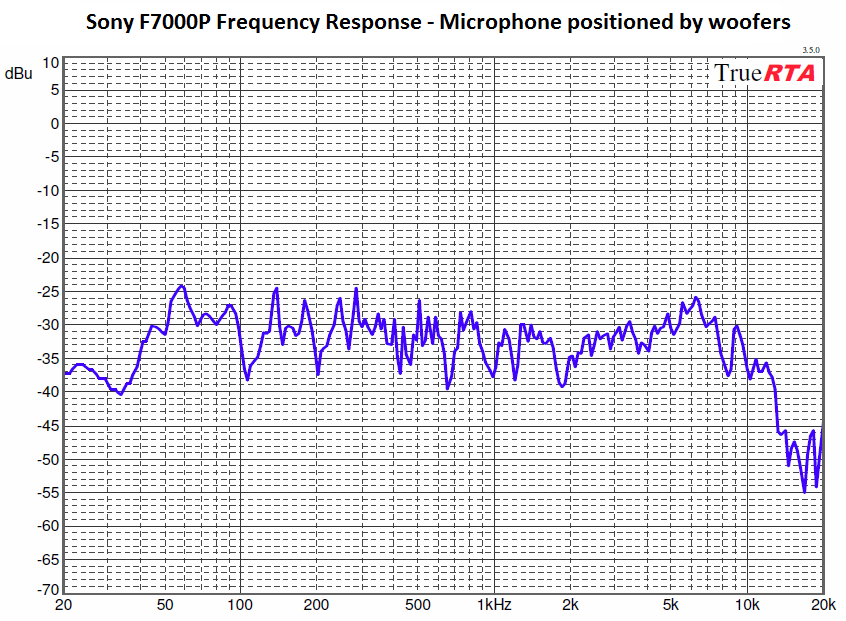
I started with the Sony SS-F7000 speakers in my living room. Not too bad for tower speakers with 8“ woofers, although a few big dips. Because of the layout of the speakers, I had to position the microphone away from the tweeter, which is why the high frequencies appear to drop out. Higher frequencies are just more directional.
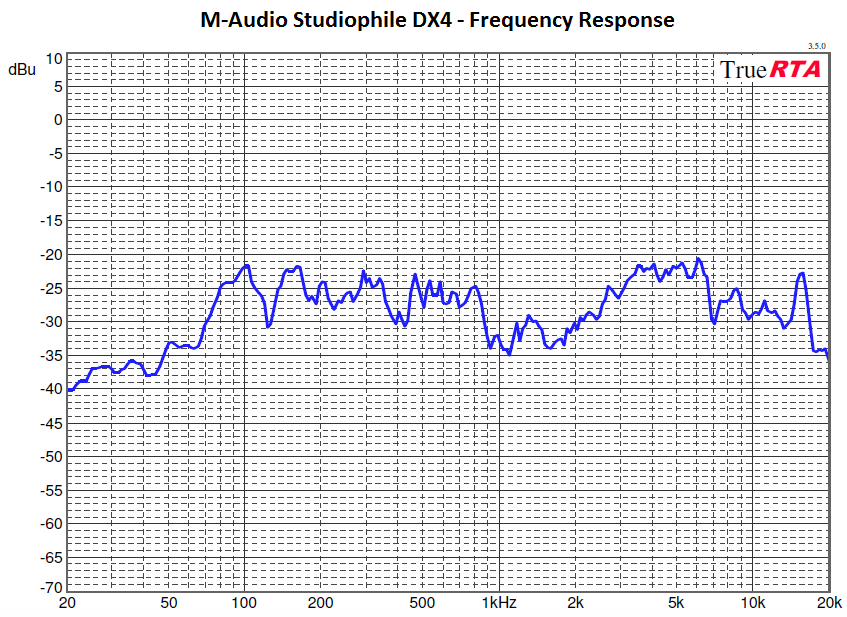
Next up were some M-Audio Studiophile DX-4 speakers we had at the studio. They are desktop speakers with 4” woofers. For small desktop speakers at $100, these are some excellent speakers.
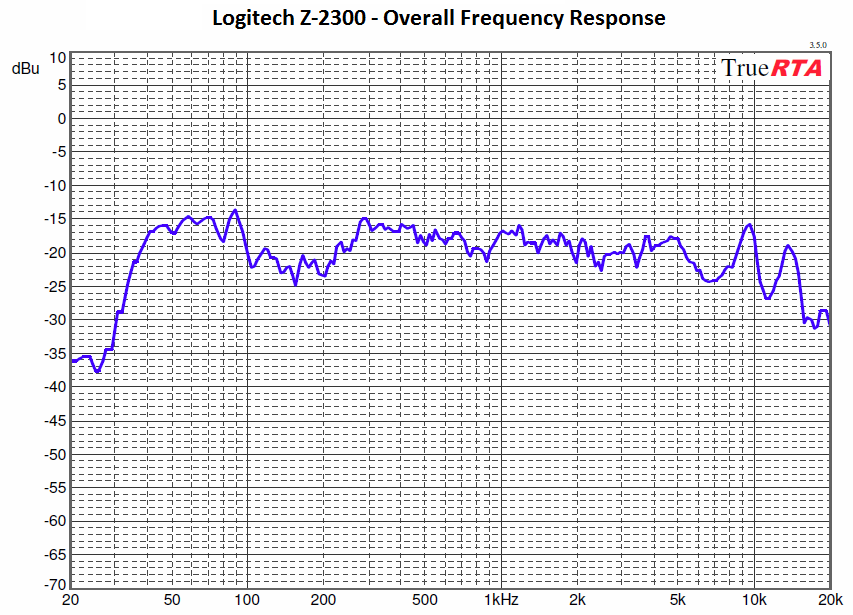
Before I built my own speakers, I used the Logitech Z-2300 2.1 system with 2“ driver satellites and a 8” woofer. The above response was measured with the satellites on top of the woofer. Note the 6 dB dip from around 100 to 300 Hz, which is very audibly noticable. For fun, I also measured the response of the satellites and the woofer individually.
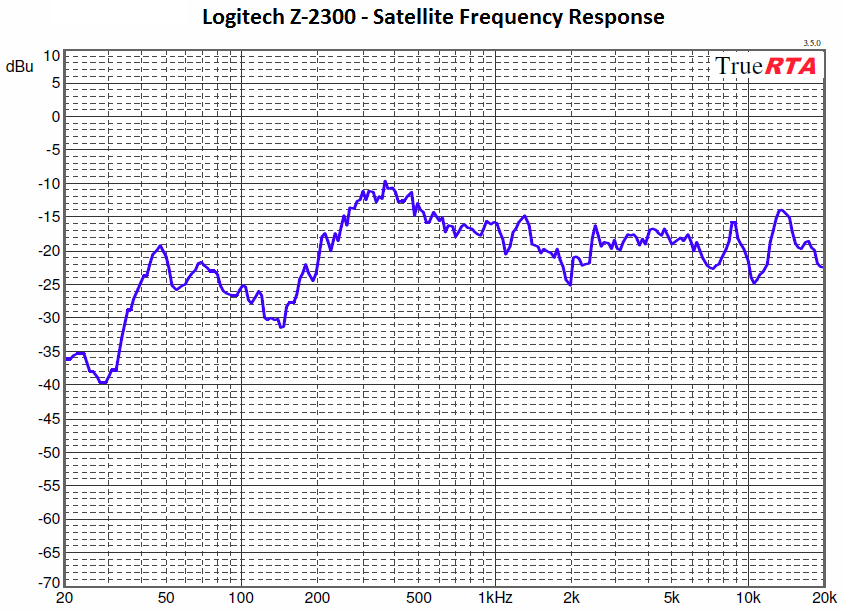
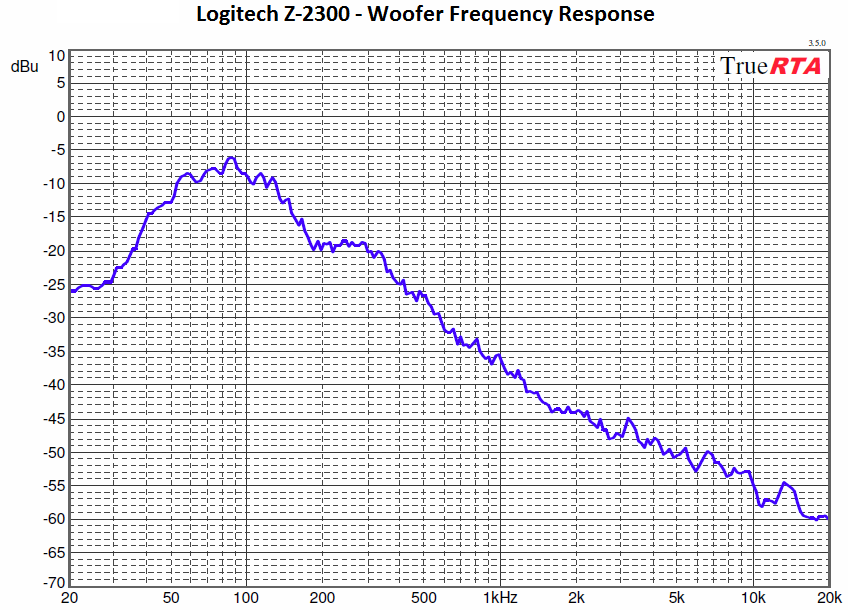
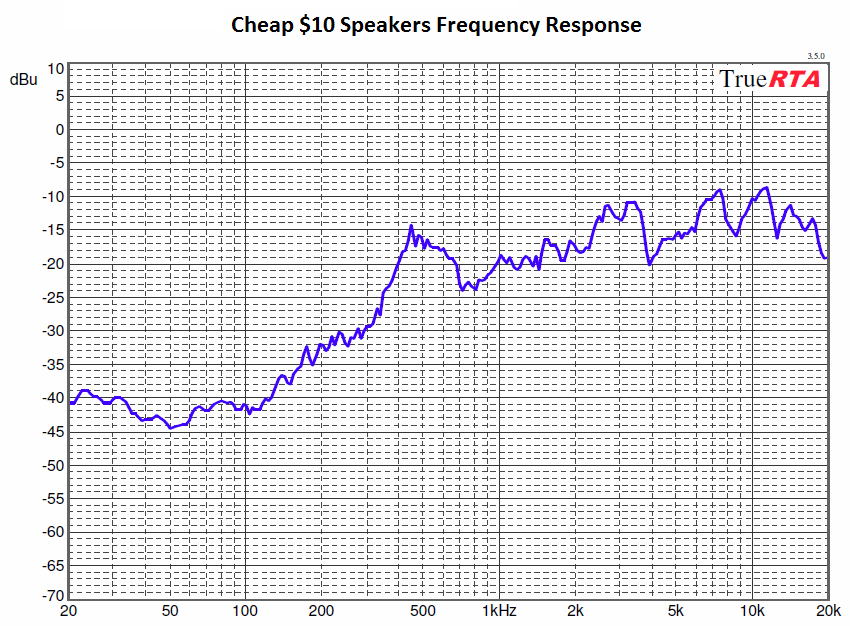
These are some crappy, generic $10 speakers, and unfortunately this type of speaker is quite popular. This particular set had a single 2“ driver. You can see that they have virtually no bass and don't really pick up until 400 Hz. This is how you get that hollow, tiny sound.
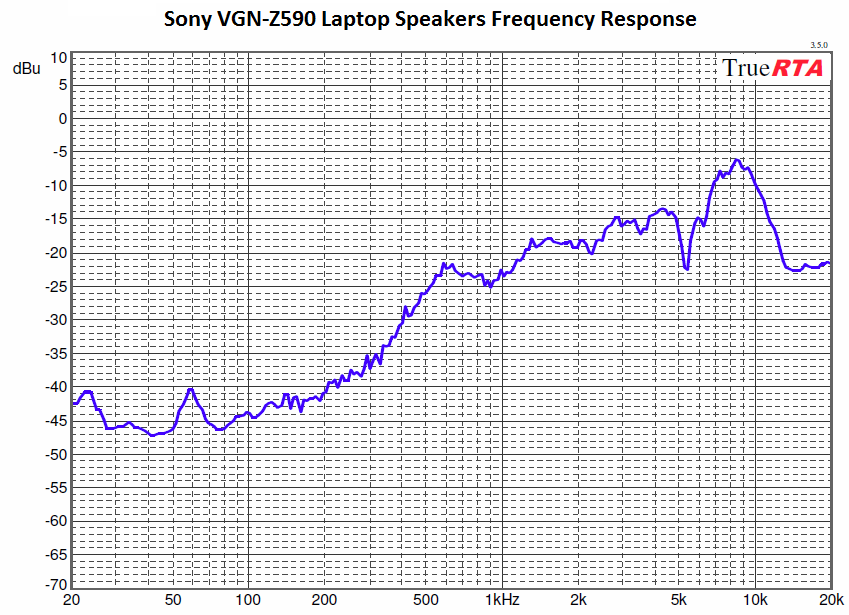
These are the speakers on my Sony VGN-Z590 laptop. This is a small laptop, so it doesn't have any of those enhanced speakers, just generic laptop speakers. You'll notice it has a frequency response very similar to the cheap $10 speakers. The difference is these speakers use some smaller half inch drivers, so it's a little more impressive. I also wouldn't expect any kind of bass response from laptop speakers.
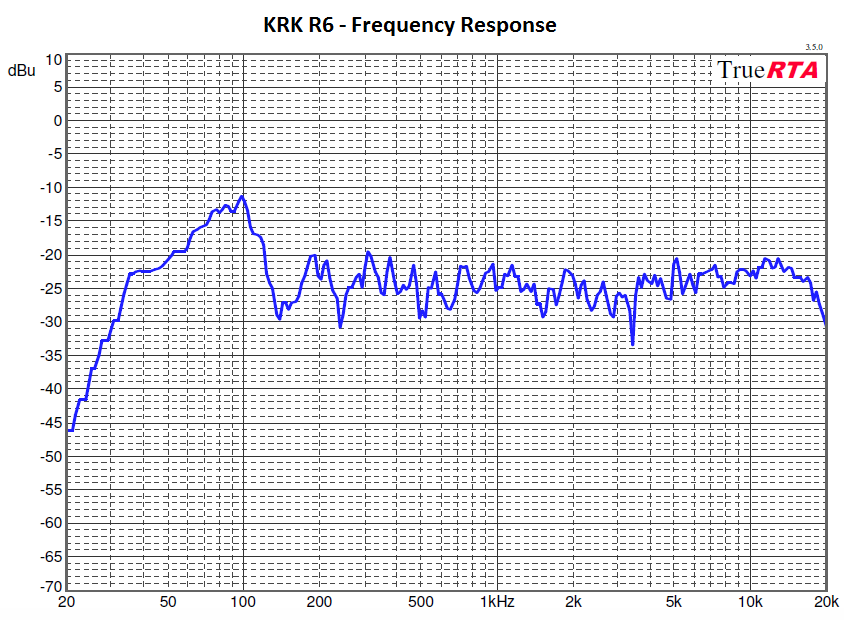
We had a set of KRK R6 speakers in our office, and these are fairly decent desktop speakers with 6” woofers and cost about $300 for a pair. This is a great example of bass-boosted speakers. Most of the frequency response is very flat, except frequencies from about 50 to 150 Hz are boosted by about 6 dB, giving you a “bass boost”. (I checked and this was not a product of the amplifier). Some people like this kind of design, but I'd rather use an equalizer.
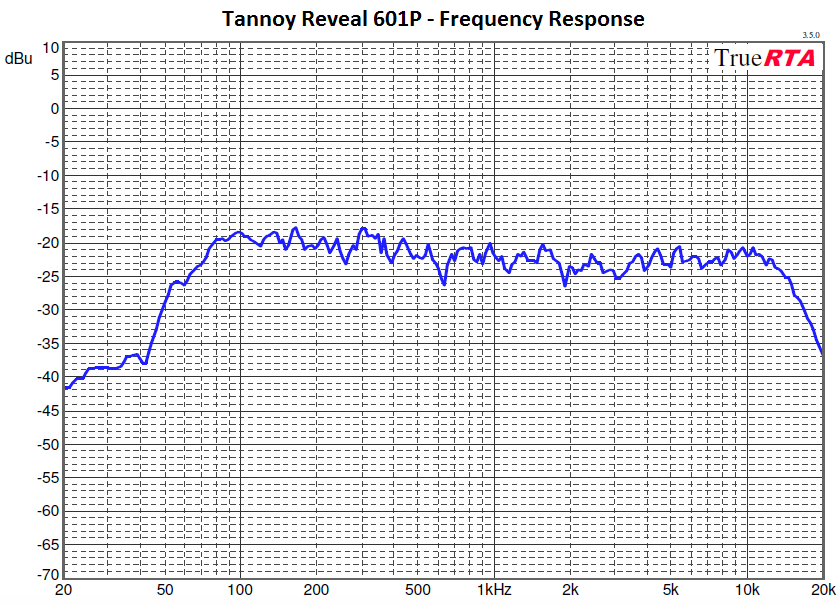
These Tannoy Reveal 601P speakers were also being used at our radio station. These are very high quality studio monitors with 6“ woofers, and they have a very flat frequency response, until they drop off at about 70 Hz.
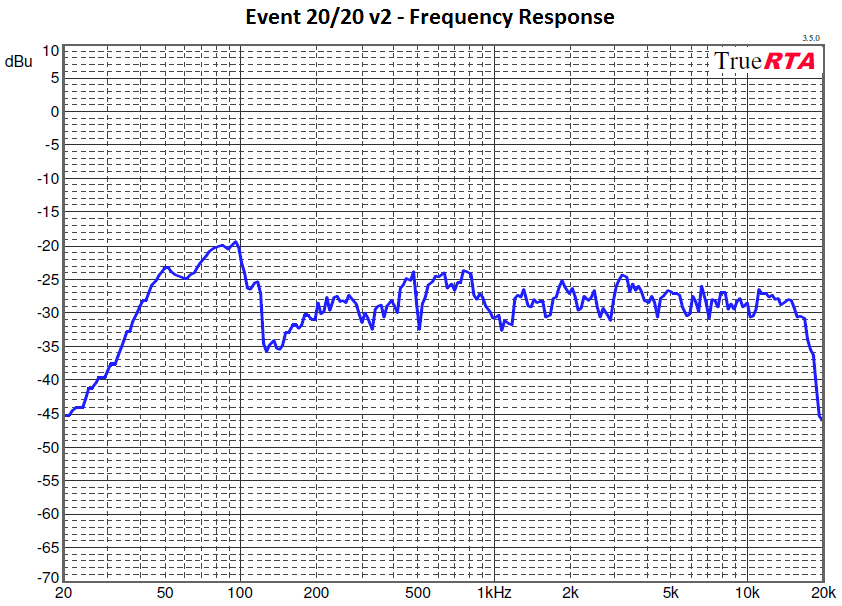
We were using a pair of Event 20/20 v2 speakers in our production studio as monitors. These desktop speakers have 8” woofers. They have a fairly flat response except for another bass-boost, similar to the KRK's above. We are actually considering replacing them as monitors, since you really don't want a bass boost in a production environment.
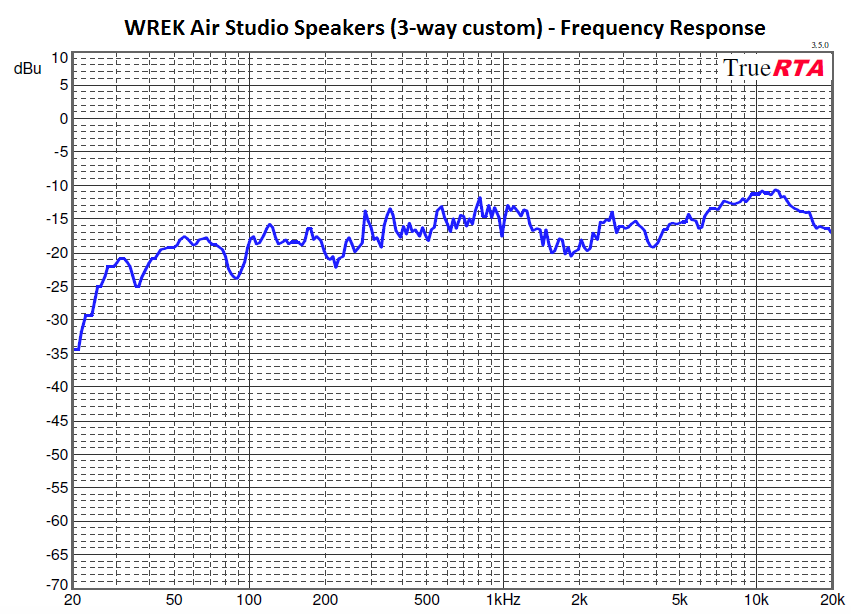
These are very large speakers in our air studio. They are a custom set of 3-way speakers with a 10“ woofer. They were designed and built by EE students in the past. You can tell that they were designed well, as they have the flattest frequency response of all the speakers that I tested! They also had excellent response all the way down to 30 Hz! Wow!
I learned a lot investigating all these different speakers, and I hope to measure some more in the future (maybe more consumer speakers to compare against!).
Writeup: May 2011

